Smokey Eye Makeup Tutorial



NGC 2170 (Angel Nebula) - галактична туманність, залишки супернової типу RN (відзеркалююча туманність) у сузірї Єдиноріг, де відбувається активне зореутворення. Тут знаходяться гарячі зірки і хмари з газу і пилу. Велика молекулярна хмара Mon R2 знаходиться доволі близько до нас, на відстані близько 2400 світлових років. - @planets_moons_stars on Instagram




- A sky full of stars - I drove an hour out of the city to capture this amazing view

Blushing Botanical Bride Canvas Print

Vi from Arcane


The Orion Nebula with a 17” telescope. Come watch this scope run tonight on @optcorp ‘s Twitch channel ClearSkiesNetwork. Or check it out at ClearSkiesNetwork.com. I hope to see you there! - @gibsonpics on Instagram

2024 IPA Winners: Unveiling The Future Of Photography In 20 Pictures



- 500 million stars in Andromeda Galaxy as seen by Hubble space telescope. [578x699]




- Earth view from center of The Pacific ocean


PumpkinPals 10/02/2024 - PC Wallpaper

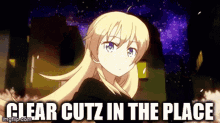
- Thats Phobos, Mars moon. Imagine having a satellite that actually lives upto its name.

*ੈ✩‧₊˚

algues


Galaxia de Andrómeda. Cuevas de las monas. Chihuahua. Re-editada. De parte de César Contreras. - @ligaastronomica on Instagram



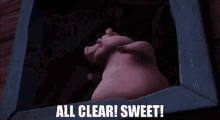
לפני שנספר לכם על התמונה המטורפת הזו נעדכן אתכם שהיום אנחנו פתוחים עד השעה 19:00 וביום שישי עד השעה 12:00. החנות פתוחה בהתאם להנחיות וכמובן אפשר גם להזמין מהאתר ובטלפון. צילום שמי הלילה תמיד ריתק אותי עוד מהיותי ילד קורא ספרים של מדע ואסטרונומיה על חומר התא ומבנה היקום. לפני ארבע שנים, אחרי צילום שביל החלב הוקסמתי מהאפשרות הזו ומטבע סקרנותי דחפתי את גבולות צילום האסטרו הכי רחוק שאפשר ולמדתי מכל מקום אפשרי על התחום.. #צלםהשראה שלנו הוא רועי לוי והראיון איתו גרם לנו להבין באמת כמה הוא כוכב. תיהנו! הקישור לראיון בעמוד הפרופיל שלנו @astroi_levi • • • • • #הביתשלהצלמים #צילוםזהארליך #ארליךצילום #israel #telaviv #ig_israel #tlv #israel_best #ישראל #insta_israel #igersisrael #israeloftheday #israelinstagram #israeli #instagram_israel #israeligram #il_instagram #photos #insta_telaviv #photograph #yedioth #insta_global #telavivcity #hapitria #israel_times #gf_israel #ig_telaviv #igourisrael #e_srael - @erlichphoto on Instagram


wallpaper


Photo 📸..... ............ Follow for more @nature_official_19 @nature_official_19 @nature_official_19 ............. #likeforlikes #gaintrain #gaintrick #sdvtodos #motihari #gainwithcarlz #gainwithmchina #gainparty #jayeshnation🌙 #followtrain #chuvadelikes #yashdan #baghieworld #100likes#kerala #india #malayalam #mallu #kochi #photography #manavediting #keralagram #avinashfans #godsowncountry #gainwithbaghie#malayali #keralatourism #keralagodsowncountry #kozhikode #malappuram - @nature_official_19 on Instagram

Female Art Pose


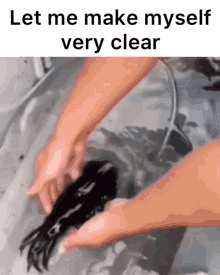
- Subaru telescope


Jinx from arcane


🎵 cause in a sky full of stars I think I saw you... 🎵 Many colorful stars are packed close together in this image of the globular cluster NGC 1805, taken by the NASA/ESA Hubble Space Telescope. This tight grouping of thousands of stars is located near the edge of the Large Magellanic Cloud, a satellite galaxy of our own Milky Way. The stars orbit closely to one another, like bees swarming around a hive. In the dense center of one of these clusters, stars are 100 to 1,000 times closer together than the nearest stars are to our Sun, making planetary systems around them unlikely. The striking difference in star colors is illustrated beautifully in this image, which combines different types of light: blue stars, shining brightest in near-ultraviolet light, and red stars, illuminated in red and near-infrared. Space telescopes like Hubble can observe in the ultraviolet because they are positioned above Earth’s atmosphere, which absorbs most ultraviolet light, making it inaccessible to ground-based facilities. This young globular cluster can be seen from the Southern Hemisphere, in the Dorado constellation, which is Portuguese for dolphinfish. Usually, globular clusters contain stars that are born at the same time. NGC 1805, however, is unusual as it appears to host two different populations of stars with ages millions of years apart. Observing such clusters of stars can help astronomers understand how stars evolve, and what factors determine whether they end their lives as white dwarfs or explode as supernovae. Credit: ESA/Hubble & NASA, J. Kalirai #nasagoddard #Hubble #space #science #astronomy #spaceimage #spacepic #nasa - @nasagoddard on Instagram




- Cocoon Nebula from my Driveway 👍✨👽

Not me or mine



Saddled to Orion’s right hip is a pair of beautiful emission nebulae which we call the Flame and Horsehead. Both nebulae, which are about 1,300-1,500 l.y. from here, glow from the radiation given off by surrounding stars. The Flame nebula in particular glows due to the relentless ultraviolet energy produced by Alnitak, the bright blue star (actually a triple star system) near image center and the furthest left of Orion’s 3 belt stars as seen in the Northern hemisphere. Within this nebula are also filaments of heavier dust which form patterns of dark lines. Next door is the Horsehead Nebula – while the main attraction here is a horsey-shaped dark nebula obscuring detail behind it, the larger red backdrop (IC 434) glows due to the radiation produced by the star system Sigma Orionis (the bright “star” in the upper right). The magnetic force from these stars also impels the Hydrogen to form thin but noticeable streams, making it look almost like a tidal wave of water. Both areas are busy forming new stars and solar systems – much like their neighboring Orion Nebula which is out of view to the right (or Celestial South). As always, the big version can be seen on Astronewton.com, just check my bio for the link. I also included a 🔥high contrast💯 edit at the end to make the dank detail easier to see. . . . These objects cover a larger area of sky than you may think, too. The first image of this series is probably about 4-5 “Full Moons” across. Background nebulosity also extends much further than just these two main nebulae as well, as this pair is only one small part of the much larger Orion Molecular Cloud Complex. While I did not have nearly enough skies to capture all the nebula I wanted, I did manage to catch a mosaic of this area. This image is only the left-most panel of a 60-hour, 3-panel mosaic captured across 18 nights from Dec 2019 through March 2020. Enjoy! #space #apod #astrophotography #astronomy #nightsky #astrophoto #universe #cosmos #galaxy #longexposure #deepspace #orion #longexposure_shots #stargazing #stars #astro #ig_astrophotography #natgeospace #astrophoto #photographingspace #nasa - @astronewton on Instagram

The Results are Clear



- Science-ish

Its better to be alone.😊


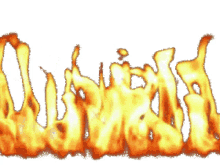
- part of the Veil nebula

Vulpes Vulpes Metal Print



- The Orion Nebula


Jinx

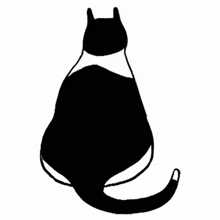
- ITAP of a beard flip in Puerto Rico


- False Color Image of the Moon showing compositional variations


- Clyde’s spot - New Jupiter Storm discovered

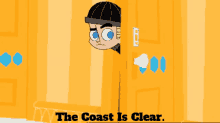
- Astronomy: places of interest

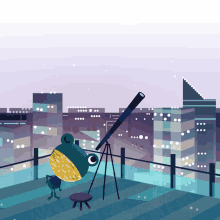
Mars ❤ ........ ⭐follow @cosmic.exploration_official ⭐follow @cosmic.exploration_official ⭐follow @cosmic.exploration_official ⭐follow @cosmic.exploration_official ⭐follow @cosmic.exploration_official ⭐follow @cosmic.exploration_official .... .... ❤Like ❤Comment ❤Share ❤Tag ❤Follow .... .... #science #space #hubble #cosmos #philosophy #cosmology #revolution #pluto #images #blackhole #atom #nuclues #discoveries #electro #dynamics #thermo #spacex #spacecraft #einstein #newton #hawking #physics #chemistry .................. ................. ................ ............... .............. ............. ............ ........... .......... ......... ........ ....... ...... ..... .... ... .. . - @cosmic.exploration_official on Instagram


- M22 globular cluster [4200x4200]


What is the first thing you see?💀The expansive, 600 trillion km wide Rosette Nebula, 5,000 light years away from home. 💫 The lovely, symmetric shape of this stellar nursery is sculpted by the winds and radiation from its central cluster of hot young, O-type stars. Stars in the energetic cluster, cataloged as NGC 2244, are only a few million years young, while the central cavity in the Rosette Nebula, is about 50 light-years in diameter. The nebula can be seen with a small telescope toward the constellation of Monoceros, the Unicorn. 🌌 The radiation from the young stars excites the atoms in the nebula, causing them to emit radiation themselves producing the emission nebula we see. The mass of the nebula is estimated to be around 10,000 solar masses. 🌌 Image credit: @curtismorgan - @nightsky on Instagram


- Clouds cast thousand-mile long shadows into space when viewed from the ISS.


- Color & Symbolism


. Amazing #Iris #Nebulae from @murat.sana 📸🔭🌌 . Meade 115mm Tripled APO ED Refractor Orion Atlas Pro AZ-EQ Atik 460 EXC Color CCD Camera 24x360 + 5 Dark + 30 Flat + 30 Bias İn Pixinsight . #Galaxy #Ngc7023 #Dark #Flat #Bias #Meade #Celestron #Skywatcher #Apochromatic #Refractor #reflector #Orion #Equatorial #Altazimuth #Atik #CCD #Cmos #Camera #Canon #Nikon #Pixinsight #Photoshop #Registax #Astronomy #Astrophotography #AmateurAstronomy #Telescope #Mount - @worlds.astrophotographers on Instagram


- From a geostationary orbit 36,000 kilometers above the equator, Russian meteorological satellite Elektro-L takes high-res images of our planet every 30 minutes. But only twice a year, during an Equinox, can it capture an image like this, showing an entire hemisphere bathed in sunlight. [900x900]


#astrophotography #spacephotography #galaxyphotography #astronomy #space #galaxy #solarsystem #galaxies #spacephotography #galaxyphoto #spacephoto #galaxyphotography #milkyway #andromeda #milkywaygalaxy #andromedagalaxy #astronomy #nasa #stars #constellations #universe #astronomyposts #astronomyart #astronomyphotography #astronomypost #constellation #nebula #planets #moons - @thegalaxyphotographyy on Instagram


- Full Disk Image of Earth Taken by GOES-16 [10848x10824]


- This is M74, the galaxy with the most perfect spiral known


- Western Veil and Pickerings Triangle - 90 Minutes of Exposure from the City!

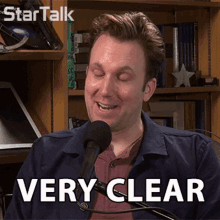
NGC 4631, also known as the Whale Galaxy, is a magnitude +9.3 edge-on barred spiral galaxy in the constellation of Canes Venatici. It has a high surface brightness and therefore is a good target for small scopes. Larger instruments reveal numerous dust clumps and mottling. The central region of NGC 4631 is a starburst region, where intensive star formation is currently taking place. Follow❤👉 @__space_art._ Follow❤👉 @__space_art._ Follow❤👉 @__space_art._ . . . . . . . . _____________________ #galaxy#milkywaygalaxy#milkyway#earth#planets#moon#sun#world#dark#space#sky#night#bestseen#beauty#beautiful#water#sea#blue#secret#scientific#astronomy#travel#nature#life#universe#solarsystem#science#colors - @__space_art._ on Instagram

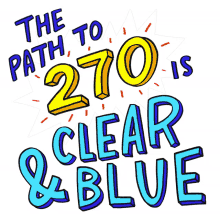
Todos os 8️⃣ planetas do Sistema Solar e Plutão: 1️⃣ – Terra 2️⃣ – Vênus 3️⃣ – Marte 4️⃣ – Mercúrio 5️⃣ – Urano 6️⃣ – Netuno 7️⃣ – Júpiter 8️⃣ – Saturno 9️⃣ – Plutão PS: estão dispostos ao acaso. ✨Siga @geografiageral 👣 O MELHOR IG do assunto no insta brasileiro 🇧🇷! #planetas #planets #sistemasolar #solarsystem #systèmesolaire #planetaanão - @decifrandoastronomia on Instagram


Had to repost this! Exploded Star Blooms Like a Cosmic Flower: Because the debris fields of exploded stars, known as supernova remnants, are very hot, energetic, and glow brightly in X-ray light, NASA’s Chandra X-ray Observatory has proven to be a valuable tool in studying them. The supernova remnant called G299.2-2.9 (or G299 for short) is located within our Milky Way galaxy, but Chandra’s new image of it is reminiscent of a beautiful flower here on Earth. G299 was left over by a particular class of supernovas called Type Ia. Astronomers think that a Type Ia supernova is a thermonuclear explosion – involving the fusion of elements and release of vast amounts of energy − of a white dwarf star in a tight orbit with a companion star. If the white dwarf’s partner is a typical, Sun-like star, the white dwarf can become unstable and explode as it draws material from its companion. Alternatively, the white dwarf is in orbit with another white dwarf, the two may merge and can trigger an explosion. Image Credit: NASA/CXC/U.Texas #celestronfans - @celestron_telescopes on Instagram


- A Spectre in the Eastern Veil

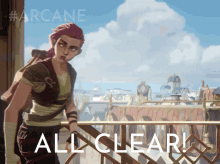
- Helix Nebula • NGC7293 [3000x2400]


- The Pleiades: My Favourite Cluster, seen here by DeepSkyWest

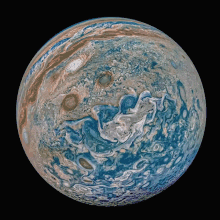
- Must of had Taco Bell


- The galactic core of the milky way. Ground based amateur astrophotography.

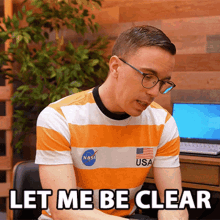
Amazing Sight... Featured artist: @live_free_run_far Follow @ExploreUniverses for more amazing astronomy photos! - @stars.astronomy on Instagram


Trevor Jones aka @astrobackyard shows the first image captured with the RAPTOR 61 telescope! Go follow his page and YouTube channel for more info. Click the link in our bio to get notified of upcoming Radian updates! The Heart and Soul Nebulae. Probably the best test subject for a full-frame camera on the Raptor. Sharp, Flat, Wide. • Canon EOS Ra • Radian Raptor 61 Triplet APO • Radian Triad Ultra (2) 50 x 5-minutes @ ISO 3200 Review Coming Soon 👀 #astrobackyard #radianraptor #radianraptor61 #heartandsoulnebulae #nebula #space #astrophotography #astronomy #universe #night #nightsky #nightshooters #heartnebula #soulnebula #triadultra #deepsky #deepspace #telescope #backyardastronomy - @optcorp on Instagram


- Globe


- peter quill


This faint and wispy nebula wraps itself around the icy blue Pleiades star cluster, and is almost entirely illuminated by one of the cluster’s stars, Merope Image credit: Manos Malakopoulos - @universalviews on Instagram


Sneak preview of my next project. Captured 2hrs last night of the Eastern Veil, kinda messed up to be fair as mistakingly framed this in stellarium using my ZWO 60 guide scope instead of my 10SCT at 2500mm fl 😜 turns out it doesnt quite fit in the shot the same lol but I like it, so a quick stretch to see what Im getting. Lots of potential at 2hrs, looking forward to getting another 5hrs to add to it and then process. Image caught at F10 with my ASI294MC-PRO. No filters, no crop. Thanks for looking. Astro-Nutz https://www.facebook.com/groups/297095541329641/?ref=share #meadeinstruments #astronomy #astrophotography #highpointscientific #celestron #telescope #science #astrophotography #sky #nature #nebula #orion #canonphotography #canon #cosmos #nasa #hubble #astrophysics #skywatcher #teleskop_service #instagood #instagram #photographer #astrology #astro #astronomy #nasa #canonphotography #nature #naturephotography #astrobackyard - @astro_nutz_lee on Instagram


- El universo


Click the URL on our Bio @The_department_of_astronomy to buy your Awesome Astronomy Tees, Sweaters, Caps, Mugs & Yoga Pants today! ✨ What are your first thoughts on this one? 😄 Looking for a shout out? tag #astronomydepartment on your pic! 👍 ___________________ #spacesuit #nasasocial #telescopes #spaceart #astrophoto #nightskyphotography #astrologyreadings #educateanddominate #astro_photography #sciencecenter #spacebound #educateyourselves #educatedblackwoman #milkywaygalaxy #scienceart #cosmostudent #sciencenerd #spacey #scienceiscool #nasa🚀 #spaceage #nasala #scienceworld #space #nasa #milkywaychasers #spaceman #educated #spaceshuttle - @the_department_of_astronomy on Instagram

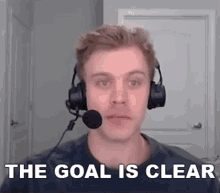
A great image of Messier 101 captured remotely using the 32” Schulman Telescope by Chenxi Xiu! M101 aka The Pinwheel Galaxy is a face-on spiral galaxy distanced 21 million light-years away from Earth in the constellation Ursa Major. 💫 Credit Chenxi Xiu when using this image! ✨ . #uazskycenter #astrophotography #remoteastrophotography #youcantoo #arizona #skycenter #schulman #telescope #remote #star #galaxy #ua #steward #observatory #beardown #chenxixie #lookup #20million #lightyears #keeplookingup #yournightsky - @uazskycenter on Instagram


- The way we look to a distant constellation that is dying in a corner of the sky.


- Things happened in 2019


- Man cave ceiling ideas

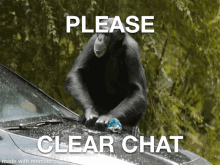
- How the sun looks when shot in Ultraviolet


- Lunar Pendant with 71 crystals of extraterrestrial peridot extracted from the Seymchan meteorite shower in Siberia encompassing a circular disc of a sample of the Moon cut from a specimen of lunar meteorite NWA 12691, set in 14K white gold. [2265x2229]

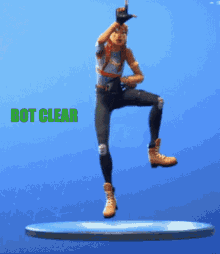
A Galactic Gem FORS2, an instrument mounted on ESO’s Very Large Telescope captured the spiral galaxy NGC 3981 in all its glory. The image, captured during the ESO Cosmic Gems Programme, showcases the beauty of the southern skies when conditions don’t allow scientific observations to be made. The sensitive gaze of FORS2 revealed NGC 3981’s spiral arms, strewn with vast streams of dust and star-forming regions, and a prominent disc of hot young stars. The galaxy is inclined towards Earth, allowing astronomers to peer right into the heart of this galaxy and observe its bright centre, a highly energetic region containing a supermassive black hole. Also shown is NGC 3981’s outlying spiral structure, some of which appears to have been stretched outwards from the galaxy, presumably due to the gravitational influence of a past galactic encounter. For more information check the link in bio. Image credit: @esoastronomy #spiral #galaxy #eso #universe #astronomy #science #nebula #stars #galaxy #paranal #vlt #photogram #spaceisbeautiful #neverstopexploring #instaspace - @esoastronomy on Instagram


- space

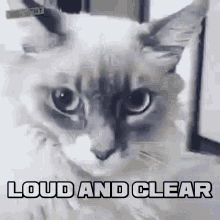
- Where is Bob ? Picture by NASA [1080x1080]


- @tanu_220f_lo_ve_r on Instagram

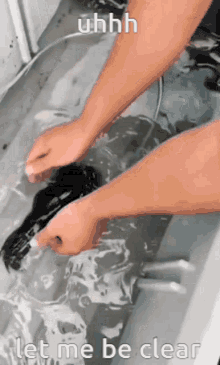
- Lets explore cosmos with a cup of tea


Our reality is so vastly overwhelming. Yet, our brains are only wrapped around what’s happening here on earth. Take a deep breath and realize that whatever you do today won’t matter anyway and in the end, fate is still the same. That can be perceived as negative and depressing, but it should be a reminder to enjoy your time here. Because it is a miracle, precious and irreplaceable. - @_jgoring on Instagram


This is the Rosette Nebula in SHO, the hubble palette. I dont have enough data yet to be fully happy with this image but I really want to share my first HST palette image.If you have any questions, comment or write a DM.Clear skies! . credit: @felix_wegerer . CB Astronomy brings together the best photographs of space. To find out everything about astronomy, check out our website [link in the bio] . . . . Check out our astronomy-themed products at cmonstore.com #amateurastronomy #astronomy_eye #galaxy #art #astronomypicturesdaily #milkyway #astronomyfix #astrophoto #astronomyday #telescope #astronomylovers #astronomynerd # - @cbastronomy on Instagram


- Cyclones on the south pole of Jupiter.

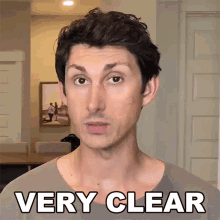
- Now You Feel Really Small [938 x 940]


- The North America Nebula, 2,200 light years away and 50 light year radius


- Astronomical Telescopes In The Atacama Desert, Chile [960 x 584]


- The Milky Way, the International Space Station and Earth


- Andromeda galaxy


Hercules Cluster - @tesleyastro on Instagram


- @cosmicstaff on Instagram


- First image of the Venus transit


- Pluto’s tiny moons are stranger than imagined.


- Soyuz and Progress above Europe [1280×853]


- R136 young stellar grouping which resides in 30 Doradus Nebula.


Another experiment from the mosaic. Do you like #1 sho+rgb or #2 hoo+rgb? ... LBN 251 (panel 44) About 8 hours integration ... #Astrophotography #astrofotografia #astrophoto #apjedicouncil #opteam #nightsky #night #stars #nebula #nebulaphotos #cygnus #SHO #narrowband - @nebulaphotosdotcom on Instagram


dreamer - @kikoromano on Instagram


- Forbidden Whipped Cream


Star spikes! single exposure 50mm on d810 . This was edited using just 2 plugins in photoshop ! Link to video of Milky Way editing in description. . #astrophotography #nightsky #nightscapes #nightscape #longexposure #longexpo #starrynight #sky#astro_photography #ig_astrophotography #nightshooterz #milkywaygalaxy #elitelongexposures #nightpixels #astrophoto #night_captures #longexpo_addiction #super_longexpo #astrography #prodigitalsoftware #astroflatpro#photoshop #nightscaper #ig_escaype - @tkottary on Instagram


NGC 3628 from Sierra Remote Observatories. This is an barred spiral galaxy in Leo - @remarkable_heavens on Instagram


The Pinwheel Galaxy (also known as Messier 101, M101 or NGC 5457) is a face-on spiral galaxy distanced 21 million light-years (six megaparsecs) away from Earth in the constellation Ursa Major. It was discovered by Pierre Méchain on March 27, 1781 and was communicated to Charles Messier, who verified its position for inclusion in the Messier Catalogue as one of its final entries.On February 28, 2006, NASA and the European Space Agency released a very detailed image of the Pinwheel Galaxy, which was the largest and most detailed image of a galaxy by Hubble Space Telescope at the time. #milkyway #galaxy #pinwheel #universe #cosmos #space #earth #nature #moon #localgroup #pinwheelgalaxy #backyard #photography #photograph #stars #planets #amateurastrophotography #amateur #photoshooting #interstellar #blackhole #greece #arta #sky #nightsky #night #science #physics #astrophotography #astronomy - @_astro_pics._ on Instagram


And there goes my problems for tonight 🙏🏼 - @davidninorodriguezofficial on Instagram

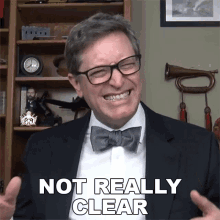
- Billions Of Years Old... Still The Largest Star Forming Region - Stars 8x The Size Of Our Sun! ☀

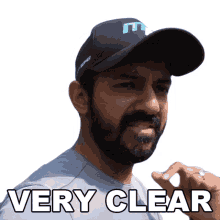
- Jupiter’s South Pole - composite image from Juno spacecraft


Check out the URL on our Bio @The_department_of_astronomy to purchase your Awesome Space Tees, Sweaters, Hats, Coffee Mugs & Yoga Pants now! ✨ Thoughts on this one? ☄️ Tag #astronomydepartment on your pics if youre looking for a shoutout! 🌠 ____________________ #spacemarine #cosmology #telescopes #nasala #astrologer #educatedwomen #astronomie #sciencerules #sciencebitch #astrologyreadings #educatedontdiscriminate #scienceisfun #astronomicalclock #milkywaypics #spaceart #sciencejokes #scienceteacher #astrolog #educateyourselves #spacecraft #spacerock #astronauts #sciencecenter #milkywaychasers #constellation #spaceship #astrophotography #space #educated - @the_department_of_astronomy on Instagram


- See a jet stream speeding through Jupiter’s atmosphere in this new view taken by NASA’s Juno spacecraft.

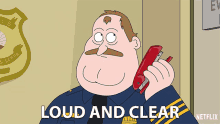
- Spaghetti nebula


Incredible image, witch come of the account @spacearts_la #planet #astronomy #galaxy #telescope #universe #space #spacelovers - @sky_dreamer.astronomy on Instagram


- Astronomy - Stars


- me likes


Mains Kea Observatories Archives today! #maunakeaobservatory #maunakeasummit - @mauna_kea_observatory on Instagram


- Astrolophysique...Cosmos...NASA...Univers ⚛️


Milkyway core #milkywayshooters #nature #natural #nikond3400 #nikon #astrophotography #astroworld #astrophotography_space #milkywaychasers #milkywaygalaxy #milkyway #milkywayphotography #milkyway_nightscapes #longexposure #longexposure_photos #munnar #idukki #kerala @nikonindiaofficial#newmilkyway #core #longexposure #milkywaychasers#lagoonnebula #nebula#deepsky - @vishnu__sudhakaran on Instagram


- Lagoon nebula pic by Dustin Gibson


- I made this a little while after an ego death trip on acid. Thought you guys might like it.

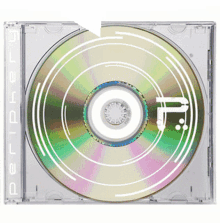
- Theres literally a side of this planet thats just the Pacific


You see the blue dot, right there, at the center of the image? It isn’t a star. It isn’t two stars orbiting one another. There also is a black hole, and this makes a nice little trio: two stars and a 4 times the mass of the Sun invisible black hole. Lying 1011 light years away, this blue dot contains, as of May 8, 2020, the closest know black hole to Earth. Demain matin à 7h15, vendredi 8 mai, je serai l’invité des Matins de @franceculture pour parler du trou noir le plus proche de la Terre jamais découvert :-) - @christophegalfard on Instagram


Messier 20 and 21 Original Image Credit: NASA #astrophotography #spacephotography #galaxyphotography #astronomy #space #galaxy #solarsystem #galaxies #spacephotography #galaxyphoto #spacephoto #galaxyphotography #milkyway #andromeda #milkywaygalaxy #andromedagalaxy #astronomy #nasa #stars #constellations #universe #astronomyposts #astronomyart #astronomyphotography #astronomypost #constellation #nebula #planets #moons - @thegalaxyphotographyy on Instagram


- Europa: Jupiters Moon


- Whirlpool Galaxy

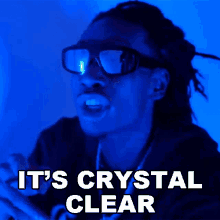
- Star Constellations


- @_bcby_fox_ on Instagram


- The Heart Nebula

Follow 👉🏻@fact.bits 👈🏻 for more amazing and knowledgeable facts. ________________________________________________ . . . . . . . . . #diduknow #wtffunfacts #didyouknowfacts #factsdaily #instafacts #fact_of_mind #allfacts #factsaboutme #factszone #factsz #truefacts #coolfacts #realfacts #knowledgeispower #interestingfacts #factsoninstagram #spacelovers #spacefacts #universefacts #universaltruth #funfoods #dopefashion #curiousfacts - @fact.bits on Instagram

NOT WHAT IT SEEMS⠀ °⠀ °⠀ The Lucia N03 is, in a way, a form of guided meditation; however, probably not in the way you’d think. It uses white light. This specific lamp uses various combinations of solid and flickering white light at fluctuating levels of brightness. This helps to pull the user into a deeply relaxed state. With a relaxed and clear mind we are able to see the same experience from a different angle increasing your capacity for happiness.⠀ ⠀ 👇⠀ 👇⠀ 👇⠀ ⠀ “It’s Instant cheerfulness with a pleasant dosage of relaxation after each session.” -Hooman M. °⠀ °⠀ Lucia N°03⠀ 🅁🄴:🄼🄸🄽🄳 🄼🄴🄳🄸🅃🄰🅃🄸🄾🄽⠀ °⠀ °⠀ #lightmeditationvancouver #remindmeditation #perspectiveshift - @remindmeditation.ca on Instagram

- 5000 Light Years Away Lies A Huge Cosmic Bubble With A Wolf Rayet Star In The Middle Called The Crescent Nebula. The Oxygen & Hydrogen Atoms Produce The Blue Green Hue In This Mass Of Spectacular Colors!

- Space Posters

- Kevin Gills visualization of Mars with Earth-like oceans and life [1024x1024]

- NGC 6946 [2000x2043]

🌞 It’s the circus of the Sun. Today, scientists confirmed that a new solar cycle is underway, meaning that we expect solar activity start to ramp up over the next several years. As this split image shows, our Sun goes through natural cycles. During solar maximum (left), its freckled with sunspots, and its magnetic field, which drives solar activity, is taut and tangled. During solar minimum (right), sunspots are few and far between, and the Sun’s magnetic field is ordered and relaxed. Understanding the Sun’s behavior is an important part of life in our solar system. The Suns powerful outbursts can disturb the satellites and communications signals traveling around Earth, or one day, Artemis astronauts exploring distant worlds. NASA and National Oceanic and Atmospheric Administration (@noaa) scientists study the solar cycle so we can better predict solar activity. Credit: NASA/SDO #NASA #Sun #Heliophysics #Solar #Sunspots #SpaceWeather - @nasa on Instagram

- The big black thing is the biggest black hole ever discovered, whilw the tiny dot in the middle is our solar system for comparison.

Les Pleïades, premiere astrophoto ! . . . . #astrophotography #astrophotos #nightphotography #universe #space #spaceart #spacephotos #spacetoday #spacepics #spacelovers #astronomy #astrofotografia #astro_photography_ #nightphotography #photoastronomy #yourastronomy #yourastro - @hdc17271 on Instagram

To keep our crew and clients safe, we will be closed wed and Thursday Stay safe out there ! - @texasbodyart on Instagram

#ASIWEEK 33/2020 #zwo #asicameras #asi290mc #jupiter #astronomy #astrophotography - @zwoasi on Instagram

V838 Monocerotis is a cataclysmic variable star in the constellation Monoceros at a distance of about 20,000 light years from the Sun. A previously unknown star was observed in early 2002 with a large flare and may have been one of the largest known stars for a short period after the flare. - By 2009, its temperature had increased slightly to 3270 K, and its luminosity was 15,000 times that of the Sun, but its radius decreased to 380 times that of the Sun, although the ejection continues expand. Statistics: • Constellation - Monoceros • Evolutionary stage - L-type supergiant • Distance - 19,900±1,960 ly • Luminosity - 15,000 (2009) • Temperature - 2,000–2,200 K Tag a space explorer who should see this post ⤵️ Source: Nasa, Wikipedia. . . . . . #v838 #monocerotis #nebulas #earthtelescope #spacephotos #telescopemirror #nebula #spacephotography #v838monocerotis #hubbletelescope #hubblephotos #spaceexploration #asteoroid #solarsystem #spacexplorer #spaceexplr #cosmos #galaxies #telescopes #spaceobservatory #esa #astronomia #astronomers #spacetelescope #cosmology #astronomy #astrophotography #telescopeview #cosmonaut #astro - @spaceexplr on Instagram

M45- The Pleiades. Also known as the Seven Sisters. One of the most stunning star clusters to see through a telescope. Credit @astrobackyard . Follow 🌠 @astrogyaan_ Follow 🌠 @astrogyaan_ Follow 🌌 @astrogyaan_ . Like 💗 . .Comments 🤔 . Share 📲 . TAGs..🔔 #astrophotography #dslrastrophotography #nightsky #astronomy #photooftheday #telescope #photography #spacex #astrography #scifi #science #solarsystem #nasa #spacephotography #spacebuns #spacejam #spaceneedle #spacefacts #unique #universe #universehasyourback @astrobackyard @astrogyaan_ ✔✔ #physicsfun #astronaut #astronomy #science #earth #isro #cosmos #scientists - @astrogyaan_ on Instagram

- Omega Nebula in the constellation Sagittarius [3747x3742]

- NASA

Heartbreaking news coming from Australia right now as bush fires devastate large areas of the country. Feeling somewhat helpless but we will be donating 100% of sales from our Aussie online store this month to Australian Red Cross to help assist those affected. If you’d like to support from afar, we do ship internationally. Sending love down under. 🖤 @artist_first @redcrossau https://artistfirst.com.au/collections/tequila-mockingbyrd?page=1 #bushfireappeal #australianredcross #bushfires2020 - @tequilamockingbyrdband on Instagram

- Earth World

- Above and Beyond

Join us, wherever you are in the world 🪐 Alongside the release of Cosmic Clouds 3-D (the first ever book to present photographs of nebulae in 3-D in a journey spanning the birth, death and recycling of stars), we’re hosting a free virtual event with the creators: 💫 Legendary Queen guitarist, astrophysicist and founder of The London Stereoscopic Company, Brian May @brianmayforreal 🌙 Astronomy magazine’s editor, David J. Eicher ✨ Astrophotographer, J-P Mestävainio They will explore how the universe creates stars from recycled gas and how our solar system will end as a glowing planetary nebula. You’ll also have the chance to put your own questions to the speakers on the night. Follow the link in our bio to join us 🪐 #ScienceMuseum #Science #Space #Stars #Nubulae #Nebula #CosmicClouds3D #Astronomy #Astrophotography #SolarSystem #Planets - @sciencemuseum on Instagram

The bipolar structure of this nebula is one of the most complex ever discovered, and the star at its center, slowly condensing to a white dwarf, is one of the hottest in the galaxy. Image credit: Yuri Dmitrienko - @universalviews on Instagram

El cúmulo globular NGC 1805 está cercano al borde de la Gran Nube de Magallanes, una galaxia satélite de la Vía Láctea. En el centro las estrellas están de 100 a 1.000 veces más cerca que las estrellas más cercanas a nuestro Sol. Crédito imagen: ESA/Hubble & NASA, J. Kalirai - @npf_cl on Instagram

- Astronomy

- Astronomy

- 16 Psyche is one of the most massive asteroids in the asteroid belt. Its made of materials like gold, platinum, and nickel. Its value is estimated to be around 700 quintillion USD.

- The aurora of different planets

Los Pilares de la Creació (Nebulosa del Aguila) Imagen: NASA, ESA, and the Hubble Heritage Team (STScI/AURA) #nasa #esa #hubble #nebulosadelaguila #pilaresdelacreacion #space #telescope #hubbletelescope #universe #astronomy #astronomia #astrofisica #astrophysics #saturday #sabado - @astronomia_para_principiantes on Instagram

- I started seriously pursuing astrophotography about one year ago. Here are my best shots from 2019. Looking forward to learning more in 2020 [OC]

- Antennae Galaxies colliding

Repost Tuesday! Thank you @kminoskyphoto for hashtagging #highpointscientific in your incredible photo! The great Orion Nebula (M42) along with the Running Man Nebula (M43) is finally viewable in the night sky. Unfortunately that means winter is coming... I’ve photographed this target many times before but I’m trying to improve with each time and I believe this is the sharpest and cleanest attempt to date. . Equipment: -William Optics Z61, Astro-modified Canon T5 Rebel -SkyWatcher Star Adventurer -ZWO ASI Air Pro -ZWO 120mm mini -ZWO mini guide scope 30x120” lights, and 10x120” darks ISO800 Processed in AstroPixel Processor and Photoshop 📷: @kminoskyphoto Be sure to hashtag #highpointscientific for a chance to get featured on our repost Tuesdays! #orionnebula #astronomy #telescope #telescopes #astrophotography #deepsky #deepskyobject #deepskyphotography #amateurastronomy #amateurastrophotography #backyardastronomy #astrophoto #astrophotographer #skyatnight #astronomyphotography #longexposure #longexpo #longexposureoftheday #longexposures #longexposurephotography #earthofficial #natgeoyourshot #natgeoastrophotography #nightskyphotography #universetoday #fantasticuniverse - @highpointscientific on Instagram

Date image was taken: 8/15/2020⠀ ⠀ Image Title: Barnards Galaxy⠀ ⠀ Image Description and Details : Description - NGC 6822 (also known as Barnards Galaxy, IC 4895, or Caldwell 57) is a barred irregular galaxy approximately 1.6 million light-years away in the constellation Sagittarius. Part of the Local Group of galaxies, it was discovered by E. E. Barnard in 1884 (hence its name), with a six-inch refractor telescope. It is one of the closer galaxies to the Milky Way. It is similar in structure and composition to the Small Magellanic Cloud. It is about 7,000 light-years in diameter.⠀ ⠀ Imaging System – Planewave CDK14, Paramount Mx+, FLI 16803/Chroma Filters⠀ ⠀ Exposure – HaLRGB, 13 hours⠀ ⠀ Processing – Pixinsight⠀ ⠀ Location/Date - Fort Davis, Texas / August 2020⠀ ⠀ Credit/Copyright – Good Astronomy/Steve Timmons⠀ - @aapod.2 on Instagram

Time - @viceversaonwax on Instagram

- @alpha__tracks on Instagram

- Portrait of NGC 281

4hrs of data in, and Im still waiting for the magic 6hrs so I can properly process this. Super quick stack in APP and a 5 min fiddle in PS just to see what data is coming through. M27 will be my first properly processed capture once I have the 6hrs of data so Im really excited thus far with what I have. 10 ACF SCT at fl2500mm captured on a ASI294MC-PRO. Astro-Nutz https://www.facebook.com/groups/297095541329641/?ref=share #meadeinstruments #astronomy #astrophotography #highpointscientific #celestron #telescope #science #astrophotography #sky #nature #nebula #orion #canonphotography #canon #cosmos #nasa #hubble #astrophysics #skywatcher #teleskop_service #instagood #instagram #photographer #astrology #astro #astronomy #nasa #canonphotography #nature #naturephotography #astrobackyard - @astro_nutz_lee on Instagram

Found some time to edit old data. This is IC1396 or better known as Elephant’s Trunk nebula, about 2400 lightyears from earth, seen in a 9hrs exposure. @teleskop_service @zwoasi @astrodonfilters - @bjoernschmittphoto on Instagram

As an Astrophotographer I seek to render the universe in ways that offer interesting perspectives of space and time. Those most luminous orbs over our heads are more famous than any deep space objects and yet are typically not the subject of Astro photography in and of themselves. Here then is Betelgeuse likely the star most at the forefront today due to it’s recent fainting episodes. Perhaps this is a new view and I hope a new perspective on the sky above. #astronomy #astrophotography #universetoday #deepsky #deepspace #outerspace #astrophoto #nightsky #nightscaper #starphotography #longexpo_addiction #natgeospace #starrynight #longexposure #astro_photography #milkyway #nebula #stars #amazing #longexposureshots #photooftheday #nightphotography #moodygrams #splendid_shotz #spacetravel - @adamblock64 on Instagram

I never get tired of looking at Andromeda Galaxy. I shot this from the outskirts of San Diego with 10 minute exposures on a Hobym 170 mount. - @gibsonpics on Instagram

Four times larger and even brighter than Orion, this nebula is still fairly unknown because it’s located in the Southern sky, where it can only be observed from the equator and southern latitudes. Image credit: Yuri Dmitrienko - @universalviews on Instagram

- astronomy

Beautiful dark and reflection nebulae region processed by @llamasheaber from a PlaneWave CDK17 at @observatorioelsauce in Chile! More from Nicolas here, NGC 5367 is a reflection nebula associated with the cometary globule CG12 in the Centaurus constellation. Discovered in 1976 on an ESO/SRC Sky Survey plate taken with the UK Schmidt telescope, CG12 is in contrast to most other Cometary Globules, because it is far away from the galactic disk. The nebula NGC 5367 (also catalogued as IC 4347) reflects light from two bluish stars of the binary system h4636 (the stars are from spectral type B4 and B7). RA: 13h 57m 38.6s DEC: -39° 59’ 56.40“ Location: Centaurus Distance: 1,794 ly Captured August 2020 Fiel Of view: 39.1 x 26.4 arcmin Total acquisition time of 23 hours. Technical Details Data acquisition: Martin PUGH Processing: Nicolas ROLLAND Location: El Sauce Observatory, Rio Hurtado, Chile Dates of Capture July & August 2020 L 23 x 1200sec R 15 x 1200sec G 15 x 1200sec B 16 x 1200sec Optics: Planewave 17“ CDK @ F6.8 Mount: Paramount ME CCD: SBIG STXL-11002 (AOX) Pre Processing: CCDstack & Pixinsight Post Processing: Photoshop CC #planewaveinstruments #telescopes #deepsky #nightsky #ig_nightphotography #astrophotography #universetoday #nightscape #milkywaygalaxy #stargazing #pixinsight #longexposure_shots #astrophoto #nightimages #milkywaychasers #nightshooters #natgeospace #ig_astrophotography #science #messier #nightphotography #astronomy #weownthenight #space #amazing_longexpo #longexposure_shots #longexpoelite #longexposure #night_excl #yourshotphotographer - @planewaveinstruments on Instagram

- Edited my favorite picture from my trip to the North Shore. Taken near Grand Marais, Minnesota.

Dont forget to follow @factsnotice for more amazing posts. 𝗧𝘂𝗿𝗻 𝗢𝗻 𝗣𝗼𝘀𝘁 𝗡𝗼𝘁𝗶𝗳𝗶𝗰𝗮𝘁𝗶𝗼𝗻🔔 👇 ⏩@facts.notice⏪ ⏩@facts.notice⏪ . . . . . . . leave this part. #meteorite #facts💯 #fact #sciencefacts #generalknowledge #instafacts #factsonfacts #explore #factsdaily #realfacts #didyouknow #truefacts #allfacts #knowledge #creepyfacts #amazingfacts #worldfacts y #wtffacts #doyouknow #coolfacts #dailyfact #factsoflife #interestingfacts #meteor #meteorgarden #asteroid #astronomy #earthplanet #mars #nasa - @factsnotice on Instagram

Rose Nebula... الرحمن فَإِذَا انشَقَّتِ السَّمَاءُ فَكَانَتْ وَرْدَةً كَالدِّهَانِ And when the heaven is split open and becomes rose-colored like oil - (37) In this verse, the word Al-Dehan (hot oil) refers to the hotness of gases in the nebula. - @milky_way__galaxy on Instagram

- Earth, sun and moon

A stellar image from Anthony Perkic (@orionbearastronomy) taken on Sept 18 of beautiful M45, the Pleiades, in constellation #Taurus. The blue “fog” is the reflection of blue light from the hot stars in the cluster off interstellar dust. @NikonUSA D5300, 8” f/4.9 Newtonian, 28m 25s. - @allspaceconsidered on Instagram

This is a 20min exposure with the canon 700d 50mm 1.8 lens and a startracker🔭 its really hard to find the polarstar on the Southern Hemisphere because this star isnt bright like polaris 😂 the settings were iso 1600 f3.2 and 20min stacked exposure - @astro_magazin on Instagram

- Climate Change Adaptation & Resilience

Andromeda Galaxy by @astrofalls⠀ Don’t forget to tag someone to see this.⠀ 👉 follow @dailyspaceshot⠀⠀ 👉 follow @dailyspaceshot⠀⠀ 👉 follow @dailyspaceshot⠀⠀ ⠀⠀⠀ ⠀⠀⠀ ⠀⠀⠀ ⠀⠀⠀ ⠀⠀⠀ 📸 @astrofalls ⠀ ⠀⠀⠀ ⠀⠀⠀ ⠀⠀⠀ ⠀⠀⠀ ⠀⠀⠀⠀⠀ ⠀⠀⠀ #space #universe #galaxy #cosmos #milkyway #spacex #stargazing #outerspace #solarsystem #spaceart #hubble #galaxysedge #milkywaygalaxy #galaxies #spacetravel #spaceexploration #astro_photography_ #spacetime #milkywayphotography #milkywaypics #astronomyphotography #astrography_ #astrophotos #astrophotographie #dailyspaceshot #nasa #andromeda #andromedagalaxy - @dailyspaceshot on Instagram

- color

- Earth and Space

- galaxy

Looking forward to seeing you in the shop again. I’m the meantime we can take orders for delivery in #Havana by WhatsApp #cuba #almacubashop - @almacubashop on Instagram

- Astronomy

- NASA posted this on their facebook, but no context was provided. Is this a real image or is this an artist rendering?

- *cosmic view*

Last weekend I made a spontaneous trip with @jaq.uili to a Bortle class 3 starry sky. It was unbelievable how many stars there were there. This photo was taken during this trip. I actually should have taken many more pictures, but the sight of this clear starry sky was simply breathtaking. Canon 70d 50mm f/1.8 @f/2.8 ISO 1600 Skywatcher Star Adventurer Pro 30x60sec Sequator Photoshop _______________________________________________________________ #nebulae #nebula #longexposure #longexposure_shots #skywatcherstaradventurer #skywatcher #milkyway #milkywayphotography #galaxy #spacelover #astrophotographie #astronomie #amateurastrophotography #amateurastronomy #deepskyphotography #deepsky #milkyway_photography #pelicannebula #northamericanebula #saveournightsky #astro_photography_ #natgeospace #starscape #milkywaygalaxy #night_excl #deepspace #spacephotography - @urban.astro.photography on Instagram

vvvv - @viceversaonwax on Instagram

I call this one “The Veil - Gas Mark 7” I don’t like to take myself too seriously. To me astrophotography and astronomy are a wonderful hobby and scientific discipline that have bought me such enjoyment and wonderful opportunities. On the odd occasion, I get not so nice people messaging me or commenting nasty remarks about me, my images, anything really. Most of the time I just block and delete, but other times it can ruin my whole day. What I wanted to say was I just wish people would think about what they are writing when they are online hidden behind a computer or phone screen 😞 people have literally no idea how the other person who’s on the receiving end of that comment may take it or how much damage it may do to them. So try and #BeKind always. At the end of the day I just want to help and inspire people to look up and enjoy space. Which brings me back to this image...I had a bit of fun overcooking it for Instagram. To make it a bit bold and beautiful and to make me, and hopefully some of you smile :) #astronomy #astrophotography #publicserviceannouncement #veilnebula #nebula #spacepic #deepspace #spacephotography #amateurastronomy #amateurastrophotography #kindness #stars #milkyway #galaxy - @astrostace on Instagram

Orion (M42) and running man (M43) nebula! My first complete project from my astroclub’s observatory at Komakallio. . This took three nights of imaging and a lot of time to process. I’m so happy that I was able to do this because the Orion is gone very soon for this spring. . 3 hours ISO 800 RGB 20 x 20s ISO200 for the core 100 BIAS frames 60 flat frames Nikon D5300 full spectrum modified Sky-watcher 130PDS HEQ5 Pro Guiding with ASI290mm and PHD2 Processed in Pixinsight and PS . #yourESA #aapod #dso #astrophotography #night_excl #ig_astrophotography #star_super_pics #igpodium_night #deepsky #ig_nightphotography #fantastic_universe #universetoday #m42 #m43 #universe_dope #astrography_ #getinspired_astro #astronomy #finland_bynight #milkywaygalaxy #orion - @mikkoitamaki on Instagram

Magic: The Gathering 🧙♂️ __________________________ Discovered by Caroline Herschel the Wizard Nebula in Cepheus surrounds a young star cluster. The stellar winds from the cluster will blow away the nebula in about a million years so hurry up and shoot it Now before the Astrophoto Police shows up I need to clarify that this is technically a composite image. It’s based on real data from two light spectra (Hydrogen and Oxygen), but the colour and details have been accentuated by processing. The goal here is to show the beauty of the dust and it’s intricate structure. Same with a Hubble image only on the amateur range. So not a scientific image🤯 The Astrophoto Police is not to be confused with the Flats Police which I totally respect. Captured from my usual Bortle 7 with an 8” Newt and QHY163m 3min exposures for about 20hrs of total integration. #astrophotographer #astroart #spacephotography #ig_longexposure #ig_milkyway #milkyway_nightscapes - @astrophoto_ygk on Instagram

- are tattoos forever

- The Universe is in us

- Black Holes

- astronomy

- Cosmos

- Am I allowed to call out NASA for photoshopping unrealistic beams of light over the stars of our universe?

Camera barrel has been pointing towards the evening + night sky recently 1st photo is a composition of bioluminescence in the San Juan Islands water over a shot of the Milky Way (On the 8th photo you can see an example of the organism circle we swirled around) Last two iPhone long exposure photos by @sethnp #a7riii #milkyway #longexposure #fullmoon #pnw #sanjuanislands #bioluminescence #moon - @jaznewt on Instagram

- 30 second exposure of the night sky with my cell phone. Pretty happy with the results!

- CW Tauri: A Nebula You Have not Seen Before [OC]

- Astronomy / Space

Your favorite thing in the sky. Pleiades. @stacy_coventry_is_here. Photo found on google images. I own no rights to it. - @markwilliamson313 on Instagram

Afocal Photography 🥳 Through Hubble Telescope 🤩! #repost #Earthorbit #astronomy #cosmology #astrobiology #astrobiologist #astrophotography - @jepiz_gallery on Instagram

So what do you think guys? Did my first test of my new Yongnuo 50mm f1.8 lens end up good? Honestly for such a cheap lens Im blown away. This image was shot using my Canon 6D and its a full frame body. Nevertheless the lens was able to render even the corners. I dont know if Im just lucky and got a really good piece or if its a standard but Im so satisfied with my purchase. Shot on Canon 6D with Yongnuo 50mm f1.8 at F3.5 20x60s ISO2000 _________________________________ Check out @teleskop_service for astronomy equipment, link in bio _________________________________ #astronomy #astrophoto #astrophotography #youresa #universetoday #instaphoto #instadaily #science #nature #beautiful #cosmos #telescope #photography #canon #dslr #nasa #milkywaypics #milkyway #milkywaychasers #milkyway_nightscapes #galaxy #galaxies #nightskyphotography #nightscape #nebula #skywatcher #photooftheday #canonczsk #yongnuo50mm #canonusa - @veleba_astrophoto on Instagram

Október 3-án nyílik az Országos Asztrofotó Kiállítás 2020. A Delfin-ködtől az ISS-átvonulásig 105 különleges asztrofotót láthatunk a Természettudományi Múzeumban. 📷: Lázár József - @index.hu on Instagram

- This comet is currently breaking up as it approaches the Sun. I was able to get a last good look at it with my backyard telescope. [OC]

- I took a 30 hour picture of the Tadpole Nebula

Many of you have guessed the inspiration for our newest Flagship Design that will be available on October 1st. It Is the Green Bank Radio Telescope. This massive telescope is used by scientists all over the world to research the vast unknowns of space. It sets 485 feet tall and has a collection area of 2.3 acres. This telescope also sits on an interesting plot of land known as the National Radio Quiet Zone. Over 100 miles of no cell phone service, internet, radio, or TV. The telescope is so sensitive that it can even pick up the radio waves being sent from the camera that took this shot. We hope you are as excited as we are to see the final design! 📸 @prevailz - @lovingwv on Instagram

Magnifica captura obtenida por Chandra X-ray de DEM L71, un remanente de supernova situado a 160.000 años luz en la Gran Nube de Magallanes. @nasachandraxray & Judy Schmidt. #nasa #chandraxrayobservatory #nasa #hubble #judyschmidt #supernova #grannubedemagallanes #añosluz #astronomia #astronomy #astrofisica #astrophysics #galaxia #universo #espacio #sábado #saturday #domingo #sunday - @astronomia_para_principiantes on Instagram

- Saturn planet

- South of Carina

new beats. which one is the hardest? - @mtwentybeats on Instagram

Whats in the sky this Wednesday? The Veil Nebula is a cloud of heated and ionized gas and dust in the constellation Cygnus. It constitutes the visible portions of the Cygnus Loop, a supernova remnant, many portions of which have acquired their own individual names and catalogue identifiers. The source supernova was a star 20 times more massive than the Sun, and it exploded between 10,000 and 20,000 years ago. The remnants have since expanded to cover an area of the sky roughly 3 degrees in diameter (about 6 times the diameter, and 36 times the area, of the full Moon). While previous distance estimates have ranged from 1200 to 5800 light-years, a recent determination of 2400 light-years is based on direct astrometric measurements. (The distance estimates affect also the estimates of size and age.) The Hubble Space Telescope captured several images of the nebula. The analysis of the emissions from the nebula indicate the presence of oxygen, sulfur, and hydrogen. The Cygnus Loop is also a strong emitter of radio waves and x-rays. The Veil Nebula rises at 7:41 pm and sets at 2:03 am the following day. It has an apparent diameter of 3 degrees, and a visual magnitude of +7. All screenshots are from Sky Safari, and all text is sourced from Wikipedia. The images were taken in the following order: (1) @galactic.hunter; (2) @filip.zaruba; (3) @xlaurent; and (4) @plutos_five_moons #veilnebula #astronomy #telescope #telescopes #astrophotography #deepsky #deepskyobject #deepskyphotography #amateurastronomy #amateurastrophotography #backyardastronomy #astrophoto #astrophotographer #skyatnight #astronomyphotography #longexposure #longexpo #longexposureoftheday #longexposures #longexposurephotography #earthofficial #natgeoyourshot #natgeoastrophotography #nightskyphotography #universetoday #fantasticuniverse - @highpointscientific on Instagram

- Amazing Space

- The witch head nebula

Heart Nebula in Hydrogen, Oxygen and Sulfur. What powers the Heart Nebula? The large emission nebula dubbed IC 1805 looks, in whole, like a heart. The nebulas glow -- as well as the shape of the gas and dust clouds -- is powered by by stellar winds and radiation from massive hot stars in the nebulas newborn star cluster Melotte 15. This deep telescopic image maps the pervasive light of narrow emission lines from atoms of hydrogen, oxygen, and sulfur in the nebula. The field of view spans just over two degrees on the sky, so that it appears larger than four times the diameter of a full moon. The cosmic heart is found in the constellation of Cassiopeia, the boastful mythical Queen of Aethiopia . Image Credit & Copyright: Peter Jenkins _______________________________________ #yourdailyuniverse #universe #instacool #instalike #astrophysics #planet #cosmology #art #alien #amazing #awesome #astronomy #astrophotography #sun #star #space #science #food #galaxy #hubble #love #cosmos #colorful #beautiful #NASA #night #nature #nebula #moon #apod - @astro_society_india on Instagram

- An infrared image of the Helix Nebula taken by the Spitzer Space Telescope in 2007.

- I like going to the Badlands alone

What is the universe made of? From what we can see, the universe appears to be mostly empty, with the occasional star or galaxy spread out across the cosmos. Most of the visible matter in our universe is composed of a single element: hydrogen. Hydrogen makes up 74% of all the matter we can see in the universe. Helium makes up 24%. The remaining 2% contains all other elements on the periodic table. This observation makes sense given that hydrogen is the simplest element and was the only atom to form in abundance after the Big Bang. For other elements to form, stars needed to fuse hydrogen atoms together to form heavier elements. Those heavier elements are then dispersed across the universe when stars die in supernova explosions, spreading their atoms across space. However, it turns out that all of the matter we can see makes up only 5% of the universe. ———————————————————————————— In the 1930s, Swiss astronomer Fritz Zwicky made one of the most important discoveries in cosmology. In 1933, Zwicky began a series of observations of the Coma Cluster of galaxies. His goal was to determine the mass of the entire cluster. When Zwicky successfully determined the Coma Cluster’s mass, he had stumbled upon one of the greatest mysteries of our universe. Zwicky found that the cluster was around 400 times more massive than what he had predicted. Zwicky had used the luminosity of the cluster to determine its predicted mass, and then used the velocities of the galaxies to determine their true mass. When he discovered this gigantic discrepancy in mass, he realized that there must be some kind of invisible matter causing galaxies within the cluster to move much faster than they should. He coined the term “dark matter” to describe this missing mass. At first, Zwicky’s ideas were dismissed. As the years went on, however, astronomers began finding more evidence that the universe contains this strange dark matter. (Post continues in the comments ⬇️⬇️⬇️) - @astrophysics_ on Instagram

- WR 136 | The Wolf-Rayet Shells of the Crescent Nebula

- Jupiter by Juno

The Pickering’s triangle est un reste de supernova daté d’une dizaine de milliers d’années, se situant dans la constellation du Cygne. #astronomy #supernova #space #spacelovers #telescope #starscape #galaxy - @sky_dreamer.astronomy on Instagram

Отличного #MetroГороскоп на сегодня, друзья! - @gazetametro on Instagram

- all tastes of the earth

- The Lagoon Nebula

- NASA pictures

- The Spider Nebula. About 10,000 light-years away from Earth

- Ocean without Mars

My first attempt at photographing the moon. I think it turned out OK. #moon #space #outerspace #fullmoon - @cleggobots on Instagram

- My first light image using new narrowband filters

Golden glow _____________ For the faint of heart who can’t stand the green, here is a warm, down to earth 😝 edit of the Elephant Trunk. By no means natural, this is just a different way one can blend narrowband data to achieve a sexy palette 🤯 Full image at astrophotoygk.com #astronomical #ig_nightphotography #nightskyphotography #longexpo_addiction #astrophotographie - @astrophoto_ygk on Instagram

Planetary Nebulae are amongst some of the most beautiful objects in the night sky. It’s like seeing what our Solar System would look like from an alien civilization’s perspective, 5 billion years into the future. 🔭✨ #BOS There are an estimated 10,000 planetary nebulae in our galaxy alone, of which roughly 1,500 have been cataloged to date. Many are very small and can be mistaken for stars. Do you have a favorite? . 📷 @space.motivs Made with images from @nasahubble Telescope / #NASA /#ESA⠀ #Nightsky #space #universe #stars #galaxy #planet #astronomy #elonmusk #spaceneedle #spacejam #spaceart #milkywaygalaxy #nightscaper #telescope #supernova #outerspace #spacestation #spacewheel #spacecity #spaceforce - @nightsky on Instagram

- Milky way core from South Africa [OC] [2048x1366]

The Pipe Nebula East of Antares, dark markings sprawl through crowded star fields toward the center of our Milky Way Galaxy. Cataloged in the early 20th century by astronomer E. E. Barnard, the obscuring interstellar dust clouds include B59, B72, B77 and B78, seen in against the starry background. Here, their combined shape suggests a pipe stem and bowl, and so the dark nebulas popular name is the Pipe Nebula. The deep and expansive view covers a full 10 by 10 degree field in the pronounceable constellation Ophiuchus. The Pipe Nebula is part of the Ophiuchus dark cloud complex located at a distance of about 450 light-years. Dense cores of gas and dust within the Pipe Nebula are collapsing to form stars. - @astronomyjourney on Instagram

Primo deepsky sulle nebulose Nord America e Pellicano • • • 🌌 #spacepics #spacetravel #galactic #discovery #nasa #toptags #astronomy #nebulae #cosmos #universe #science #constellation #universe #spacetime #outerspace #space #nightsky #galaxy #nasabeyond #deepsky #cosmology #astroglore #astronomyphotography #interstellar #astronomer #hubbletelescope #astronaut #spaceart #blackholes - @martinrasomphotography on Instagram

We still have a few slots remaining in our Homeschool Fire Building & Night Sky program on Thursday, February 20th from 6-8pm. Call 770-389-780. Cost is $8/student. - @panolamountainstatepark on Instagram

- Plutos heart just got bigger - NASA released highest resolution images of Pluto to date

- Thats the rover Curiosity taken from space.Every time I look this image, it makes me feel proud about the advancements humankind has made in spacetech.

- Around Deneb Region with my DSLR and 50 mm lenses, no tracker.

- Orions Belt

- Fibonacci Sequence in Nature

Takahashi user, Leo Shatz, took this beautiful image of the Lagoon and Trifid nebulae with his FSQ-130ED and a one-shot color camera. Fantastic shot, Leo. Congratulations! To view more information on our FSQ line of exquisite telescopes, visit: FSQ-106EDX4 https://www.takahashiamerica.com/takahashi-fsq-106edx4-quadruplet-refractor-telesco.html FSQ-85ED (In Stock) https://www.takahashiamerica.com/takahashi-fsq-85ed-baby-q-refractor-teles-10984855.html Takahashi America - @takahashiamerica on Instagram

- GRENZWISSENSCHAFT

Leaf me alone! Xanthosoma Sagittifolium Realness - @pedroribeiropt on Instagram

- The Summer Triangle over Cherry Springs State Park, PA

- I See Your Junction Of Two Oceans And Raise You Junction Of Two Galaxies

- astronomy

NGC 6188 Esta nebulosa de emisión se encuentra cerca del borde de una nube molecular grande y oscura en la constelación sur de Ara, a unos 4.000 años luz de distancia. Nacidas en esa región hace solo unos pocos millones de años, las masivas estrellas jóvenes de la asociación Ara OB1 incrustada esculpen las formas fantásticas y alimentan el brillo nebular con vientos estelares y radiación ultravioleta intensa. #astrodatos #Apod #cosmos #astronomy @astronomia.para.todos - @astronomia.para.todos on Instagram

- Our Solar System

- Melotte 15, from my 8” Astrograph.

- NGC 6823 in Vulpecula, my final work of the summer [2500x2500] [x-post /r/astrophotography]

- The Eastern Veil from my Driveway

After watching this video on searching for and processing Hubble Space Telescope images the other day I was inspired to try this out. After having a potentially clear night clouded out last night, I decided to give it a whirl. I searched out data on M51 and was pleasantly surprised at the data I found. I ran this through my usual processing workflow in Pixinsight in addition to blending the two red channels and doing a channel combination to get a RGB color image to work with. The image scale on this data is 0.05 arcsec per pixel and I used the high resolution files (~420MB per mono channel). This is just about 2 hrs of integration time across the 4 channels used to make up this image. If you want to give this a try the shortcut to the data I used is here (https://archive.stsci.edu/prepds/m51/datalist.html). You can find more info on how to find the data and process by watching the following video by Cuiv the Lazy Geek. https://www.youtube.com/watch?v=BgklkUPwPNA&pp=wgIECgIIAQ%3D%3D&feature=push-sd&attr_tag=stzWpn8wKsp-dNBS%3A6 - @dainjason on Instagram

- Invisible Barrier

- Mars, if it still had a magnetic field, atmosphere, and water

galaxias que no existen. . 🌌 . @runwayapp . . Ver estrellas, ver que danzan, formarán sonrisas En la noche, a la distancia . _ Machine learning test_004 • l •|_ l •| . . la música voladora de @gor_dos_ . . #tomipicasso #MachineLearning #Ai #ML #StyleGAN #motiongraphics #visualart #runwayml #visualcreators #covid19 #coronavirus #cuarentena #Andorra #quarantineartclub #runwayml #createdinpijamas #motionmate - @tomipicasso on Instagram

- Nibiru -Nasa

A very stunning photo of Mercury the best friend of Jupiter taken by @NASA, Mercury is traveling across the sun for the last time until 2032 - @planetjupiterphotos on Instagram

- Galaxy

- This is an image of the Great Arctic Storm of 2012. It formed over the Arctic Sea on August 2nd and dissipated on August 14th. It is the strongest Arctic summer storm ever recorded, with wind speeds comparable to that of a category 1 hurricane.

- astronomy

- A cluster of stars near the center of the Large Magellanic Cloud, one of our closest cosmic neighbors. (Photo from NASAs Hubble Telescope.)

DEM L71 is a supernova remnant located about 160,000 light years from Earth in the Large Magellanic Cloud. This Chandra image reveals an inner cloud of glowing #iron and #silicon (green 🟢 and blue 🔵) surrounded by an outer blast wave (red 🔴) thats roughly 60 light years across. 📱Want a #beautiful #space #pic as a new background #wallpaper for your phone or tablet? https://chandra.harvard.edu/instagram/wallpaper/ #NASA/CXC/SAO/STScI & Judy Schmidt #science #astronomy #chemistry #astrophysics #supernova #universe #learn - @nasachandraxray on Instagram

Anytime I use the widefield rig with the @williamoptics RedCat51 near the Milky Way, I get an obscene amount of stars. My limited processing skills need improvement to remove them without destroying the underlying beauty of the deep sky object... in this case the Cygnus Loop with the East & Western Veil Nebulas. #darksiteproblems 53 x 4 minute exposures @ 120gain #astrophotography #astropic #astrophoto #spacephoto #space #stars #cygnus #nebula #veilnebula #cosmos #universe #universetoday #sky #nightscape #landscape #nature #outdoors #stargazing #milkyway #photography #darksky #darksite #longexposurephotography #telescope #observatory #ottawa - @jonstewartshow on Instagram

- Hubble images

- Supernova SN 1993J

- Astronomy

Brains for Breakfast _____________________ I shot the Crescent during what seems to be the hottest Canadian summer ever 🤯. Shaped by a Wolf Rayet star this nebula is ever expanding and in my radiological mind it definitely looks like a Coronal Brain slice. The humid and turbulent air were annoying and I should have cooled my Newt more in advance of the sessions, so my stars are not ideal. I used the qhy163m and Optolong Ha and Oiii. 3min exposures for a total of 17ish hours. Pixinsight all the way. #nebula #spacephotography #ig_longexpo #igworldmilkyway #milkywayphotography #astronomie #ig_astrophotography - @astrophoto_ygk on Instagram

- Close-up of Jupiter looks like work of art (NASA Juno mission)

- Artist interpretation of a living, breathing Mars

A real image of our moon transiting the earth. Captured by a NASA satellite. Should be in every classroom. . . . . . #solareclipse #spaceeffect #rocket #gravity #astrophoto #astrophotography #imaginativeuniverse #spacerace #universe_dope #futurelife #astrofacts #nebulae #astrophotos #nasajpl #apod #astronautlife #deepsky #cassini - @astronomyshooters on Instagram

Go follow Adam Block (@adamblock64) if you want mindblowingly good #astrophotography in your feed. Hes so legit! . #Repost @adamblock64 ・・・ Daughters of a Titan The Pleiades Adam Block/Steward Observatory/University of Arizona #astronomy #astrophotography #universetoday #deepsky #deepspace #astrophoto #nightsky #starphotography #longexposure #astro_photography #amazing_longexpo #nebula - @photographingspace on Instagram

- Astronomy is Extraterrestrial

- moons of Jupiter essay

- Little Planet Soyuz

Rho Ophiuchi widefield by Mario Cogo (Galax Lux) From NASA/APOD: The colorful clouds surrounding the star system Rho Ophiuchi compose one of the closest star forming regions. Rho Ophiuchi itself is a binary star system visible in the blue reflection nebula just to the left of the image center. The star system, located only 400 light years away, is distinguished by its multi-colored surroundings, which include a red emission nebula and numerous light and dark brown dust lanes. Near the lower left of the Rho Ophiuchi molecular cloud system is the yellow star Antares, while a distant but coincidently-superposed globular cluster of stars, M4, is visible just to the right of Antares. Near the image top lies IC 4592, the Blue Horsehead nebula. The blue glow that surrounds the Blue Horseheads eye -- and other stars around the image -- is a reflection nebula composed of fine dust. On the featured image right is a geometrically angled reflection nebula cataloged as Sharpless 1. Here, the bright star near the dust vortex creates the light of surrounding reflection nebula. Although most of these features are visible through a small telescope pointed toward the constellations of Ophiuchus, Scorpius, and Sagittarius, the only way to see the intricate details of the dust swirls, as featured above, is to use a long exposure camera. http://galaxlux.com/ • Tag #TheNakedSingularity for a feature ✌🏻 Clear Skies 🌌 #astrophotography #astronomy #deepsky #photography #telescope #nightsky #astrophysics #rhoophiuchi #stars #widefield #starscape #instalike #instagood #igers #cosmos #stargazing #lookup - @thenakedsingularity on Instagram

- A whole box o science. (Materials International Space Station Experiment onboard the ISS)

The star that gave rise to this stunning nebula was several times larger than the sun. Now, the remains of the star are a white dwarf that has shed its outer layers of gas, creating the outer rings you see above. Image credit: NASA - @universalviews on Instagram

Winding down my time with my 8 SCT as new gear has begun to show up. With the Veil Nebula high in the sky, its a great time to shoot this Oxygen (green) and Hydrogen (Red) tendrils of this supernova remnant. 28 x 180 second exposures @ 200gain Captured with Celestron 8 SCT & ZWO ASI294 MC Pro #astronomy #astrophotography #astropic #spacephoto #spaceporn #stars #stargazing #telescope #observatory #celestron #veilnebula #supernova #landscape #nightscape #longexposure #nightsky #deepspace #DSO #darksky #ottawa #ottawaastrophotography - @jonstewartshow on Instagram

The Helix Nebula was the inspiration for Nush Cole’s submission for the RAS bicentennial quilt square. She explains what drew her to it - and the technique used to create this beauty: “have always been drawn to the Helix Nebula. Im not sure if its because of the beautiful colours or the fact that it resembles an eye. I originally painted it on but that didnt look quite right so I decided to have a go at beading. The beads are from a belt I broke years ago. I thought they might come in useful for something and Im so pleased I finally got to recycle them. Ive had a lot of fun making my square and I learned a lot too. I cant wait to see what the quilt will look like when its finished!” You still have time to get involved and create your own patch for #RASquilt - check out RAS.ac.uk for details of the project and details of our next social sewing session on September 17. Helix Nebula taken by the Spitzer Space Telescope (Infrared, 2007) Credit: NASA, JPL, Caltech, Kate Su (Steward Obs., U. Arizona). Helix Nebula quilt square Credit: Nush Cole #RASquilt #helixnebula #nasa #astronomy #RAS200 #art #sciart #beading #space #STEAM #astronomy #spaceart #nebula - @royalastrosoc on Instagram

- Witch Nebula / IC2118 and Rigel

- Large emission nebula currently above us in Southern Hemisphere

Отличного #MetroГороскоп на сегодня, друзья! - @gazetametro on Instagram

- This Hubble image captures the beautiful spiral galaxy NGC 5861, located about 85 million light-years away in the constellation Libra. The galaxy has hosted two known supernovae, one discovered in 1971 and the other in 2017

Images captured from the ISS🌪️ Comment “Storm” in your language ⛈️ A tropical cyclone is a rapid rotating storm originating over tropical oceans from where it draws the energy to develop. It has a low pressure centre and clouds spiraling towards the eyewall surrounding the eye, the central part of the system where the weather is normally calm and free of clouds.This was said to be the most powerful pre-April tropical cyclone on record in the Northwestern Pacific Ocean. © @iss . . . . 🔆 For such amazing content follow us 🔭🌌🚀 Follow: @cosmosopedia 🌪️ Follow: @cosmosopedia 🚀 Follow: @cosmosopedia 🌪️ Follow: @cosmosopedia 🚀 . . #constellation #deepspace #deepsky #strom #thunderstorms #milkywaygalaxy #nasa #universe #thunder #spacepics #astrophoto #iss #photography #nightskyphotography #clouds #natgeospace #cloudphotography #cyclone #astronomy #cosmos #tropical #spacetravel #cosmosopedia #toinfinityandbeyond #spaceexploration #solarsystem #astrophysics #tropicalcyclone #milkyway #planetearth - @cosmosopedia on Instagram

- The Pleiades star cluster is an alluring visual sight in the night sky, but deep photographic exposure reveals another level of beauty [OC]

- Enjoying a late-night cigarette.

The Pillars of Creation in the Eagle Nebula captured in infrared light by the Hubble Space Telescope. The light from young stars being formed pierce the clouds of dust and gas in the infrared. ⠀ . Explore the #universe with us 😉 👉 @astronomy_eye 🌠 - @astronomy_eye on Instagram

- In awe of this picture taken from the ISS

- The vastness of the universe scares me. Pic Credit: Hubble Telescope

The Great Carina Nebula (NGC 3372) This is one of the amazing jewels in the southern skies. It is about 8500 light years away from us. It is apparently brighter than the Orion nebula and much bigger. This is in my bucket list of targets to shoot from the Southern Hemisphere when I get a chance to visit there. . Disclaimer: This data belongs to Peter Jenkins who made it available on the Telescope.live website. I processed the narrowband data using my own techniques. . Image Specs: Total Integration: 1 hr 30 min SII: 3 x 600s Ha: 3 x 600s OIII: 3 x 600s . Gear: Telescope: ASA500N (CHI-2) 50cm aperture f/3.8 Observatory: El Sauce Observatory, Chile Camera: FLI PL 16803 Pixel Size: 9 um Filters: Astrodon Ha, SII, OIII (3nm) . Software: DSS, Photoshop, Starnet++ . . . #nebula #carinanebula #galaxy #space #stars #astrophotography #deepsky #deepskyastrophotography #astrophoto #astronomy #science #stem #cosmos #universe #cosmic #colors #natgeospace #natgeo #narrowband #galactic #universetoday #nasa #hubbletelescope - @the.z.axis on Instagram

🤯 #Repost @earth.beyond ・・・ Meet the BOSS, the largest structure in the Universe (so far). Astronomers discovered a wall of galaxies 1 billion light years across, larger than anything else yet identified in the cosmos. 🌌 🔭 Follow @earth.beyond #spaceexploration #mars #martian #spacetravel #nasa #spacex #rocketscience #elonmusk #redplanet #solarsystem #spaceshuttle #spacephotos #exploration #astronaut #astronauts #blueorigin #scifidaily #cosmos #spacefacts #interstellar #science #spaceexplorer #spacestation - @charlesfhuot on Instagram

- Beautiful Blue Comet

- A small section of the Andromeda Galaxy showing over 2 billion stars

Sharpless 2-308 - The Dolphin Nebula 😍🔥 - This beautiful Nebula is located approximately 5,200 light years away from Earth, in the constellation of Canis Major. This Nebula is estimated to have a diameter of 60 light years. The massive star located at the center of the Nebula is known as a Wolf-Rayet Star, which are 20 times larger than the mass of the Sun. #space #nebula #dolphinnebula #universe #bubble #blue #colorful #beautiful #distant #star #supernova #explosion #theuniverse #amazing #image #wow Image Credit and Copyright : Chilesope 2, Pleaides Astrophotography Team (Peking U.) - @spaceimages1 on Instagram

Astronomers have found a potential sign of life in the high atmosphere of neighbouring Venus: hints there may be bizarre microbes living in the sulfuric acid-laden clouds of the hothouse planet. According to the study published in Mondays journal Nature Astronomy, two telescopes in Hawaii and Chile spotted in the thick Venutian clouds the chemical signature of phosphine, a noxious gas that on Earth is associated with life. The astronomers hypothesize a scenario for how life could exist on the inhospitable planet where temperatures on the surface are around 425°C with no water. The planet contains droplets with tiny amounts of water but mostly sulfuric acid that is a billion times more acidic than whats found on the Earth. The phosphine could be coming from some kind of microbes, probably single-cell ones, the researchers said. . . . #astrohpysicist #asterism #astronomer #astronaut #cosmonaut #cosmology #earth #venus #mars #planets #solarorbiter #aliens #alienlife #magnetic #elonmusk #spectrum #science #aryabhatta #artist #simulation #microbes #water #atmosphere #phosphine #stargazingmumbai_team🔭 #stargazingmumbai - @stargazingmumbai on Instagram

- This visualization of the Laniakea supercluster which represents a collection of more than 100,000 estimated galaxies.

- Nasa Images

- Milky way

Galaxies come in a wide variety of shapes and sizes. Perhaps the most famous are the spiral galaxies. Our own Milky Way is a spiral galaxy, along with nearly all other galaxies within our galactic vicinity, including Andromeda. The structures of these galaxies are truly awe inspiring. The complex spiral is one of nature’s most beautiful creations. All you need is time and physics, along with a lot of stars. All of the material in a spiral galaxies orbits around the galactic centre. It was once assumed that the spiral shape was created because stars closer to the galactic centre orbit faster than those further out. This turned out not to be the case, although something similar was happening. Rather than differences in stellar velocity being the cause, it turns out that the spiral arms themselves rotate at varying speeds. When material is exchanged between spiral arms, such as fast moving material moving into a slow moving arm, it hits a kind of wall and begins slowing down. This can compress stellar material, leading to a wave of star formation. Stars are denser than gas clouds, and thus move slower than the surrounding material. Over time, stellar material moves ahead of the stars and compresses, forming more stars and continuing the process. These differences in velocity and exchanges of material create and maintain the spiral structures of these magnificent galaxies. Image credit: NASA/ESA, Hubble #science #physics #astronomy #astrophysics #nasa #hubble #telescope #cosmos #universe #space #esa #nature #knowledge #discover #explore - @astrophysics_ on Instagram

Beyond visible light lies the key to many of astronomy’s greatest mysteries. Infrared imaging allows us to look past dust clouds to reveal tapestries of brilliant stars. Just take this near-infrared image of the Lagoon Nebula. #NASAWebb’s infrared abilities will zero in on the most difficult-to-observe cosmic objects, including low-energy brown dwarfs, young protostars and galaxies in the early universe. #gorgeous #stars #SeeingStars #LagoonNebula Credit: NASA, ESA, and STScI. - @nasawebb on Instagram

- Andromeda Galaxy

...That time I had the privilege of virtually meeting and partnering with 12 year old William @saint_rossi25 to help him get his first image ever. William is a sharp kid and he’s completely fascinated by Space. He found my Instagram profile and apparently it became a regular topic of dinner conversations with his mom. So I reached out and asked for permission to log in with him to @optcorp ‘s largest remote observatory telescope. He would control the telescope from 3000 miles away. I told him I would train him how, but the only rules were that he would have to take full control and make every creative decision as well as every single click of the mouse. Basically, he would have to learn to be an astrophotographer. A few nights later, I watched in awe as this image unfolded. This was months ago, and I still look at this image all the time, reminded of what a kid can do when given a chance to channel their passion, excitement and creativity. Congratulations @saint_rossi25 on creating what is now the single best image on the Instagram feed you like to scroll through. - @gibsonpics on Instagram

- Europa with water vapor detected by Hubble (2012)

The stunning “Pillars of Creation”, taken by the Hubble Space Telescope. 🔭⠀ ⠀ Follow @astro.orion_ for more astronomy content! 🌌🪐⠀ ⠀ This image shows the pillars as seen in infrared light, allowing it to pierce through obscuring dust and gas and unveil a more unfamiliar – but just as amazing – view of the pillars.⠀ ⠀ In this ethereal view the entire frame is peppered with bright stars and baby stars are revealed being formed within the pillars themselves. The ghostly outlines of the pillars seem much more delicate, and are silhouetted against an eerie blue haze.⠀ ⠀ ⠀ © NASA, ESA/Hubble and the Hubble Heritage Team⠀ ⠀ ⠀ #space #science #astronomy #aerospace #astro #astrophysics #chemistry #physics #quantumphysics #earth #climatechange #universe #beauty #math #apolloprogram #astrophotography #nasa #esa #explore #rocket #crewdragon #astroorion #constilation #spacex #elonmusk #Hubble #Spitzer #milkyway #astronautics #spacex #aeronautics ⠀ - @astro.orion_ on Instagram

- Marriage Aesthetic

NASAs Hubble Space Telescope shows a rare view of a pair of overlapping galaxies, called NGC 3314. The two galaxies look as if they are colliding, but they are actually separated by tens of millions of light-years, or about ten times the distance between our Milky Way and the neighboring Andromeda galaxy. The chance alignment of the two galaxies, as seen from Earth, gives a unique look at the silhouetted spiral arms in the closer face-on spiral, NGC 3314A. The motion of the two galaxies indicates that they are both relatively undisturbed and that they are moving in markedly different directions. Credit: NASA/ESA/Hubble - @astro_smb on Instagram

- NASA pictures

- art, designs

- Backyard Lava Wall

Capture Ha, Hb, Sii, and Oiii at the same time, smaller stars, more nebulosity, amazing details, and quality, Whats there not to love about the Triad Ultra Filter? For more details on the Triad Filter click the link in our bio! This photo was taken on the Triad Ultra Filter by @astrophotoross The Heart Nebula, in Cassiopeia, HOO Palette The world seems to need a bit more love in it at the minute, people are dying and hurting for many reasons in what has been an incredibly challenging 2020 Hope everyone is safe, peace and parity to you all 15x600s stacked in DSS, processed in Photoshop ZWO ASI1600MC Pro, Unity Gain, -15C Canon EF L 70-200mm f/2.8 at 200mm f/4 iOptron CEM25P Pegasus Pocket Powerbox ZWO ASI120MM-S guide camera ZWO 60mm guide scope Radian Triad Ultra Quadband 2” OSC Filter #deepskyastrophotography #deepskyobject #natgeospace #astrophoto #spacephotography #spacephotos #nebulas #keeplookingup #science #solarsystem #spacespot #astrophotographer #heartnebula #triadfilter - @radiantelescopes on Instagram

This shows my progress taking space photos of the Elephants Trunk Nebula starting with the first one 4 years ago when I couldnt even find it, to my latest picture that earned me a NASA Astronomy Picture of the Day (APOD). Picture 1 was captured in September of 2016. I spent 30 minutes pointing my telescope at this spot and when I combined my exposures to make the final image, nothing was there. Picture 2 was captured in November of 2016. This is when I started using narrowband filters to fight against light pollution, but I wasnt yet interested in color images. Picture 3 was captured in 2017 and my first attempt at capturing the Elephants Trunk Nebula in color. Picture 4 was captured in 2018 and I thought it was my best attempt up to that point. Picture 5 was captured in 2019. I went big on this one with 22 hours of exposure time. It earned me a NASA Astronomy Picture of the Day. #elephanttrunk #astronomy #astrophotography #cosmos #dark #deepsky #longexposure #milkyway #nasa #natgeo #naturephotography #nebula #nightphotography #nightshooters #nightsky #outerspace #physics #planet #science #space #stars #stargazing #telescope #universe #universetoday - @chucksastrophotography on Instagram

- Cool Facts and Science

Date image was taken: 8/22/2020⠀ ⠀ Image Title: VDB142 - ELEPHANT TRUNK IN HUBBLE PALETTE⠀ ⠀ Image Description and Details : ORION UK CT10 f4. 8⠀ 10micron GM2000 HPS⠀ MORAVIAN G28300FW⠀ Astronomik H alpha 7nm⠀ 108x600 bin1 - 20°⠀ Astronomik SII 12nm⠀ 14x600bin1⠀ Astronomik OIII 7nm⠀ 86x600⠀ IMAGE TAKEN FROM COSTALPINO SIENA⠀ ⠀ Copyright Information: RICCARDO CRESCIMBENI⠀ AAPOD2 Title: ELEPHANT TRUNK - IC 1396 - VDB142⠀ AAPOD2 Page Link: https://www.aapod2.com/blog/vdb-142-ic-1396 - @aapod.2 on Instagram

- Star ending its life (Source: NASA)

- NGC 6814 [1280x1280]

- Clearest photo of mercury ever taken!

- Jupiters Stripes captured by NASAs Juno spacecraft

- Astronomy

- Al-Khalili

- The heart and soul nebula

A linda Galáxia de Andrômeda, também conhecida como Messier 31, M31 ou NGC 224 e originalmente a Nebulosa de Andrômeda, é uma galáxia espiral a aproximadamente 2,5 milhões de anos-luz da Terra, e a galáxia principal mais próxima da Via Láctea. . ✍🏻 Marquem seus amigos! . ☝🏻 Sigam-nos e fique por dentro de tudo sobre o #Universo e nossa moda #Spacewear em nossa loja. . 🛒 www.astronautaurbano.com.br . 🖖🏻 Mostre seu #Conhecimento! Vista #AstronautaUrbano! . . #astronomia #cosmos #nasa #cosmologia #camisetasdeastronomia #essataldeciencia #sistemasolar #telescopio #vialactea #galaxia #lua #astronomy #andromeda - @astronauta.urbano on Instagram

- Nebulas

- NGC 6188: The Dragons of Ara Image Credit & Copyright: Tian Lee [4096x4096]

Takahashi user Jose Mtanous made this jaw-dropping image of the Rho Ophiuchi Cloud Complex with his FSQ-106 and a f/3 Reducer. View more information on our FSQ-106EDX4 here: https://www.takahashiamerica.com/takahashi-fsq-106edx4-quadruplet-refractor-telesco.html View more information on our 0.6x Reducer here: https://www.takahashiamerica.com/takahashi-f-3-06x-reducer.html Outstanding work, Jose! Keep up the great work. Takahashi America - @takahashiamerica on Instagram

Image by @gippslandimages Tag your best images with @canonanz or #canonanz ・・・ MILKYWAY colours - Finally got to try out my staradventurer eq mount. This shot is composed of 40images all tracked, settings 70mm f2.8, iso 1600. Camera canon 6d, lens Canon 70-200, Tripod Benro holding up the skywatcher staradventurer. . . Follow me www.gippslandimages.com.au - @canonanz on Instagram

- Science Corner

NGC 6188 aka. Rim Nebula is a star forming nebula, and is sculpted by the massive, young stars that have recently formed there – some are only a few million years old. This spark of formation was probably caused when the last batch of stars went supernova. credit: @starsvoyage 🌌For high quality Galaxy wall decor from the Hubble telescope check out the link in Bio. 🔭 (Worldwide shipping) . ➡️Follow my personal account: 🇳🇱@chasingescape . ➡️For a chance to get featured use our hashtag and tag. . #Astrophotography #astropics #hubble #milkywayshooters #astronomy #space #cosmos #universe #nebula #nightsky #deepsky #deepspace #spacepics #galaxyobservatory #stargazing #telescope #longexposure #skywatcher #amatureastrophotography #telescope #ig_astrophotography #nasa #ig_worldclub_astrophotography #astro_photography_ #universetoday #astronomyshooters #spacefuze #deepspaceshooters - @astronomyshooters on Instagram

Well, Im not sure where these last couple of clear nights came from considering they were calling for fog, but they are being used to their fullest. Finally got a chance to process one of the many targets Ive captured over the last week. Here is M11. Known as the Wild Duck Cluster. I usually have no problem seeing shapes in sky objects, but this one I have yet to see a triangle that represents a swimming or flying duck. Buried in the southern Milky Way, this open cluster is located in the constellation Scutum. It requires binoculars or a telescope to see. It contains 2,900 stars and is 6,120 light years from Earth. Equipment details: Total exposure time ~20min (81x15sec) @ f/1.9, C14EdgeHD+Hyperstar, ZWO ASI2600mc pro cooled to -10c, flats & darks calibrated. Processed in PixInsight - @deepskyeye on Instagram

The Tarantula Nebula🕷What would you name this nebula? ⠀ ⠀ This is the most active star forming region scientist have ever seen. It is so bright, that if it were placed at the same distance from us as the Orion Nebula, it would be casting shadows at night time! While it is a prominent star forming region, this region is also a prominent graveyard for stars, as this area contains the closest supernova ever observed by scientists. ⠀ Are you ready to discover the wonders of the universe🔭 Follow @needspacemedia ⠀ Credit: @cosmic.speck ⠀ ⠀ #universe #astronomy #nebula #nebulae #nebulas #orionnebula #orion #nebulosa #nasa #spacetime #spacetravel #deepspace #stargazing #deepsky #natgeospace #astrography #astrophoto #spaceexploration #astro_photography_ #astrophotos #backyardastronomy #astronomyphotography #spacetoday #spaceporn #spacepics #telescope #supernova #supernovas #hubble #hubbleclassic - @needspacemedia on Instagram

In what could be a major space breakthrough, a group of researchers from the U.S. and China have, for the very first time, found evidence for the existence of a potential planet outside the Milky Way Galaxy. If this discovery is confirmed, the said planet will be named M51-ULS-1b. The first ever exoplanet—a planet outside our solar system—was found in the year 1992. Since then, thousands of exoplanets have been discovered, but this is the first time an extragalactic planet, i.e. a potential planet outside our galaxy, has been discovered. This new world is situated approximately 23 million light-years away from the Earth, and lies within the M51 Whirlpool Galaxy, which is located relatively close to Ursa Major. . . . #space #galaxy #milkyway #saturn #solarsystem #spacenews #weather #weatherchannel #theweatherchannel - @weatherindia on Instagram

